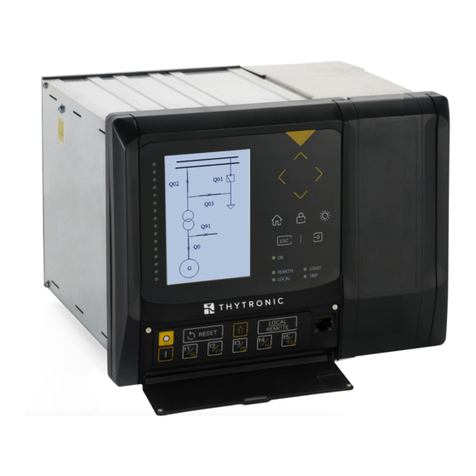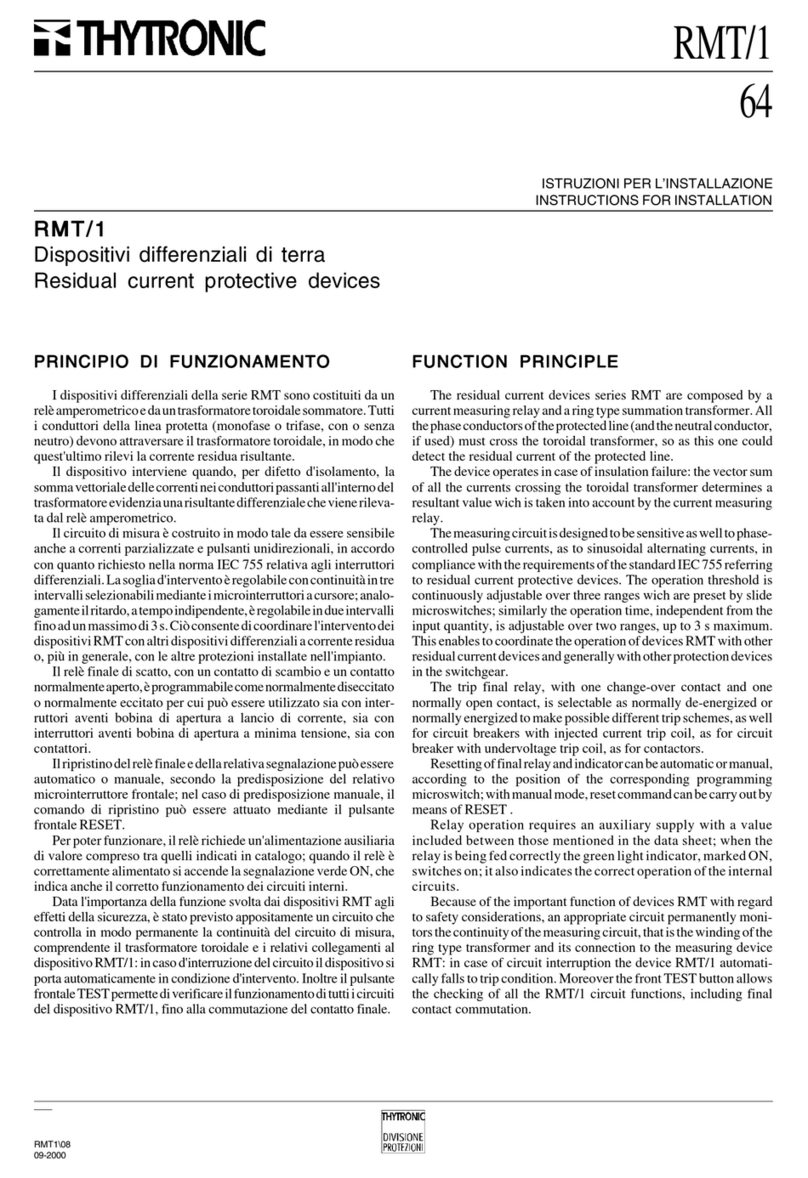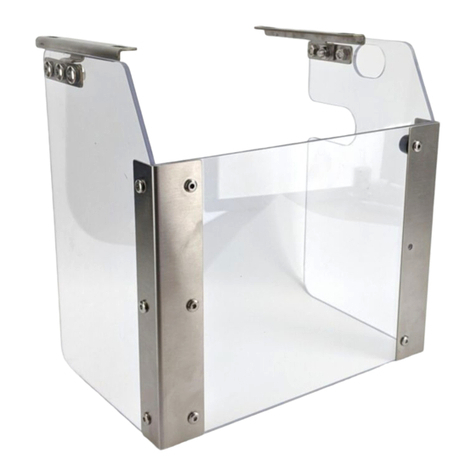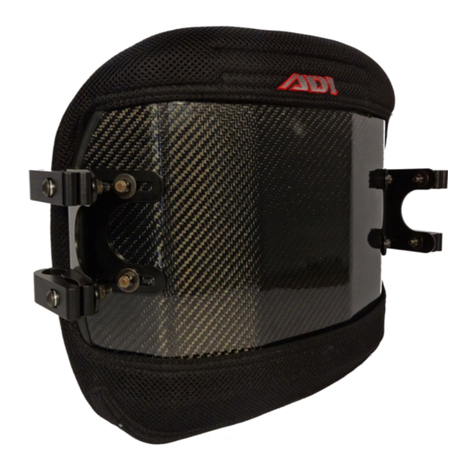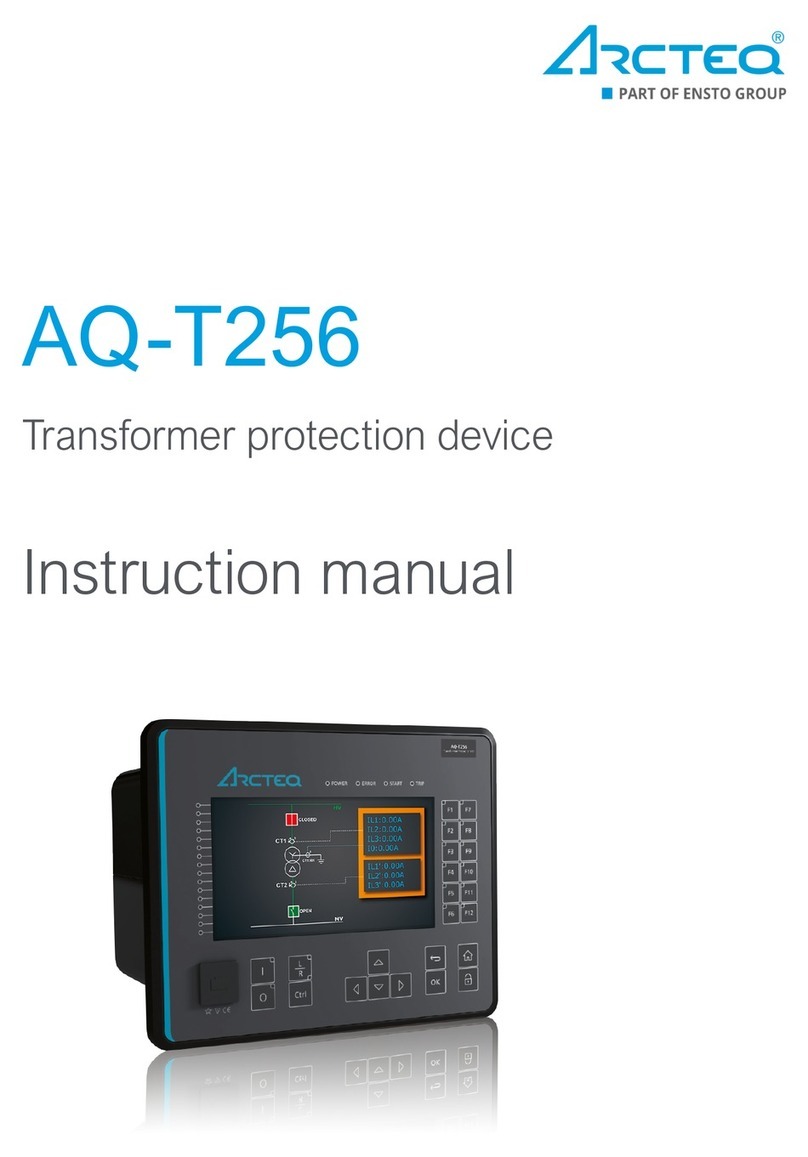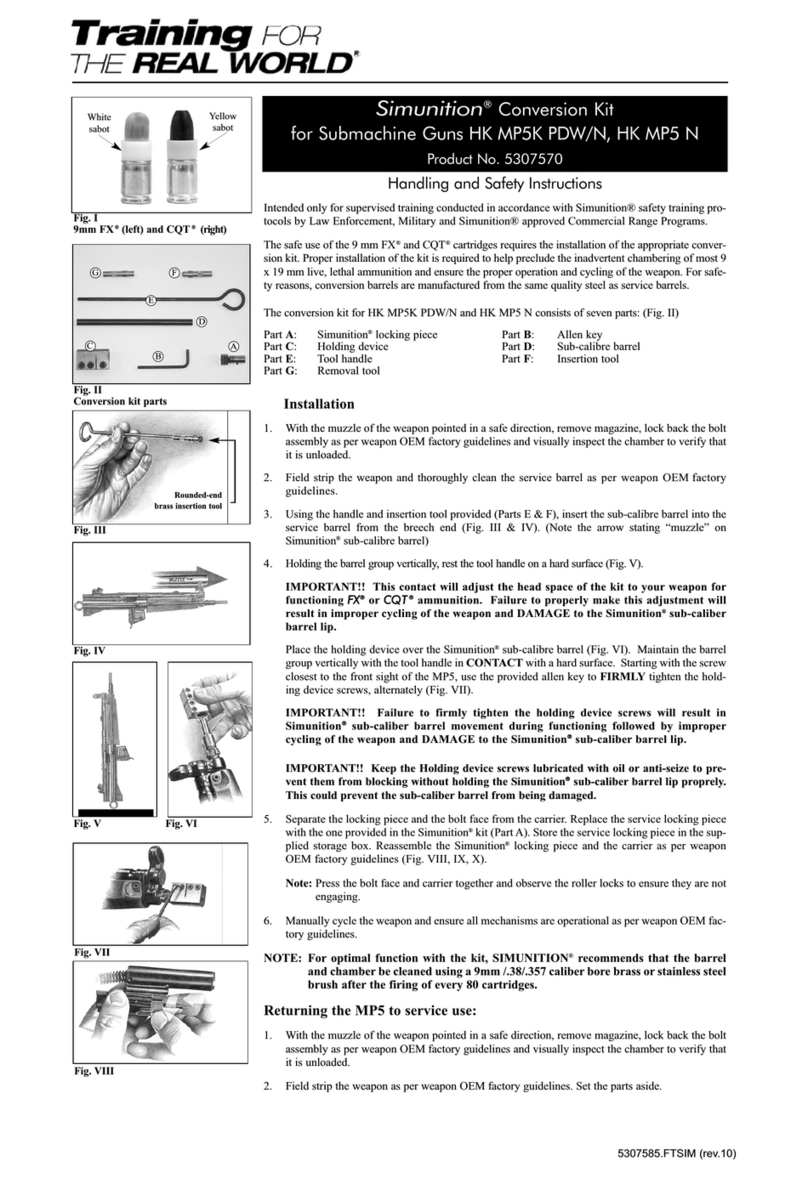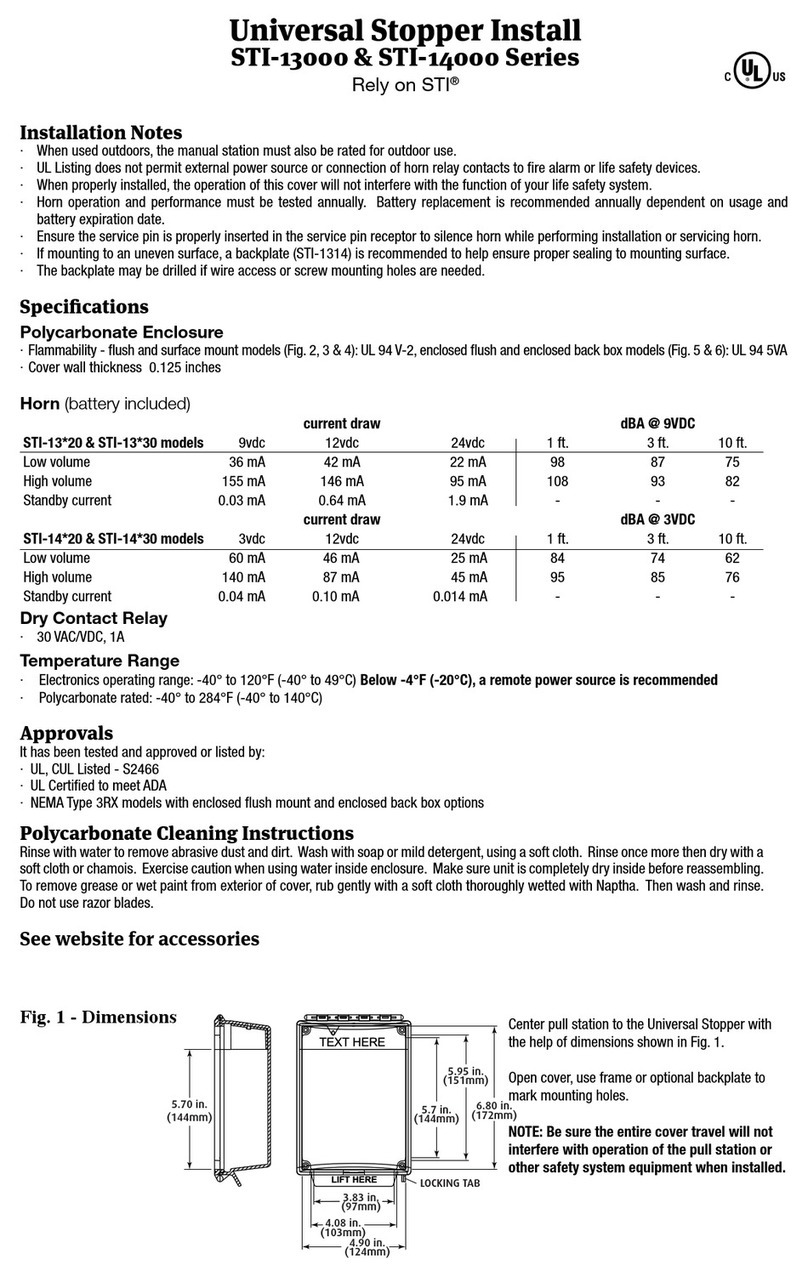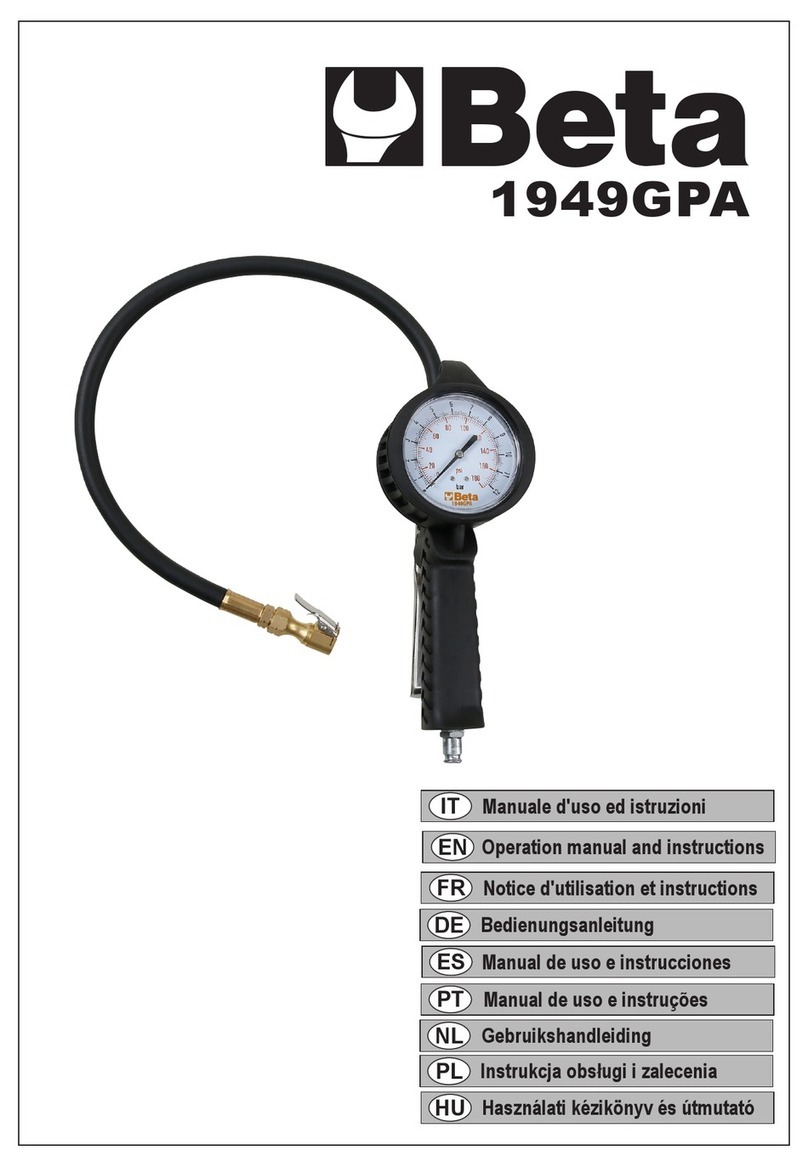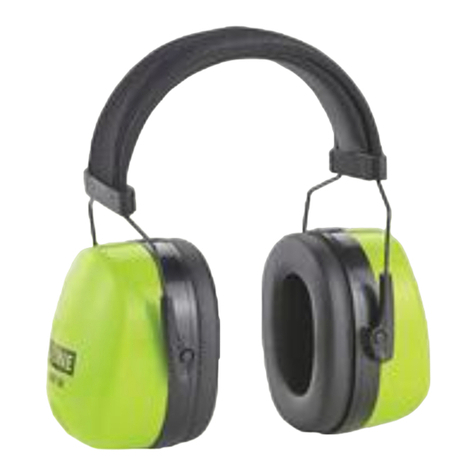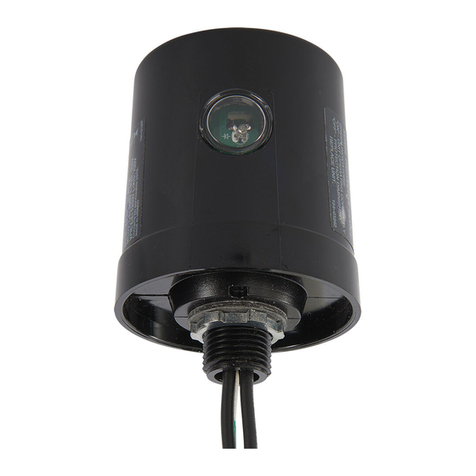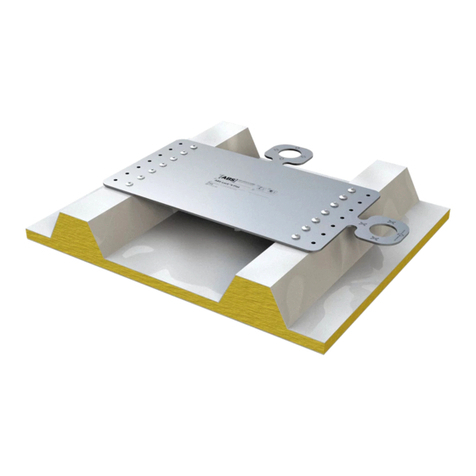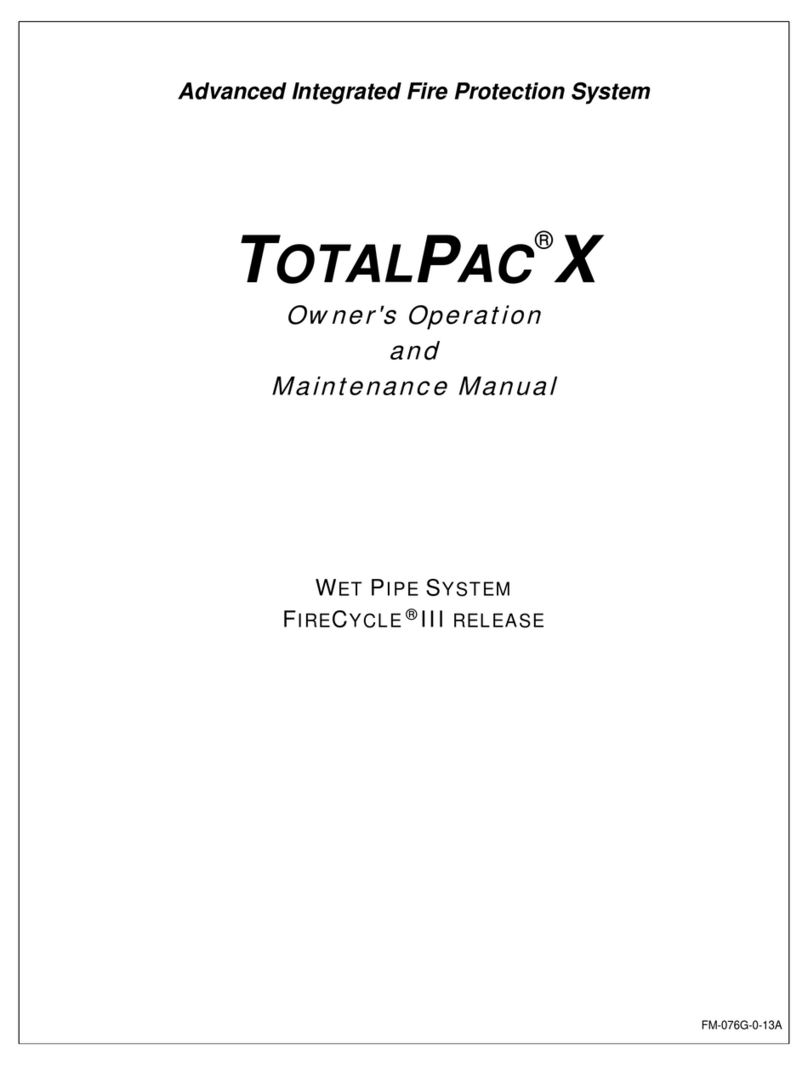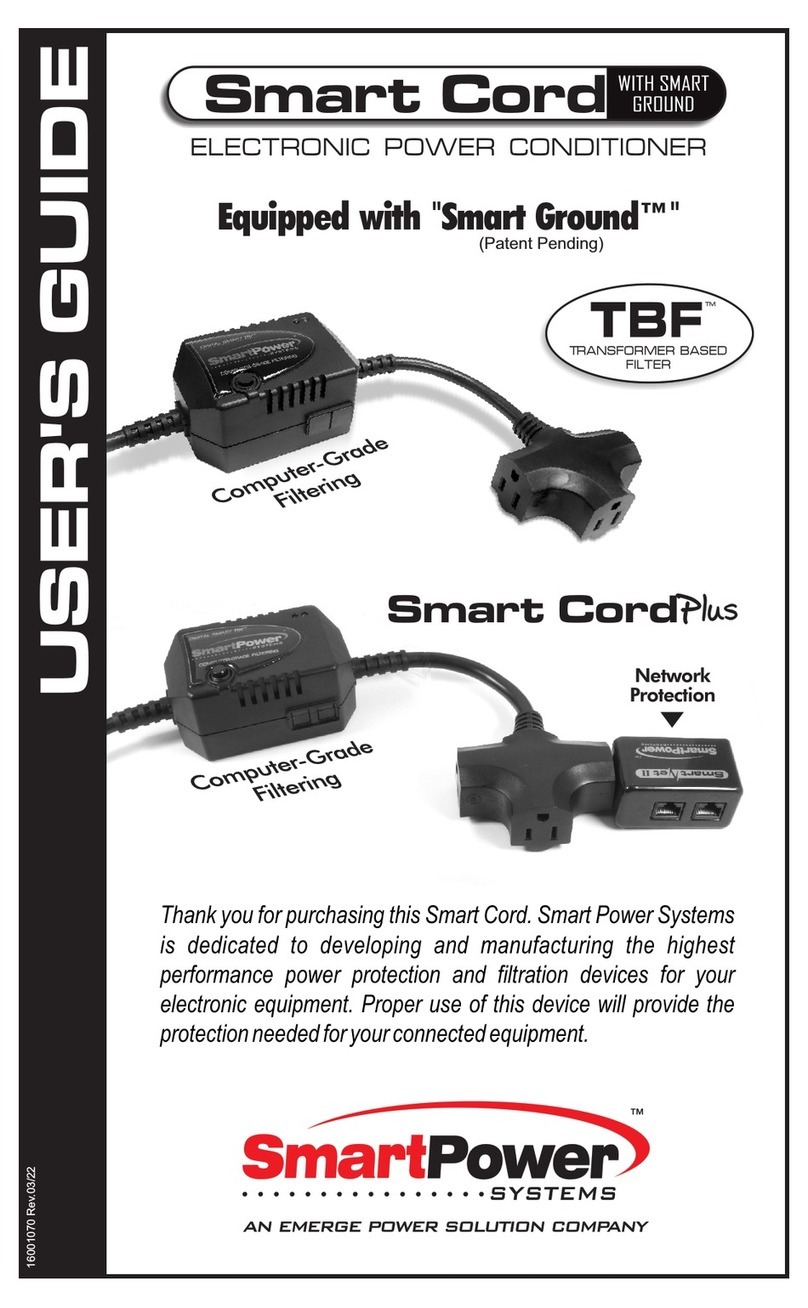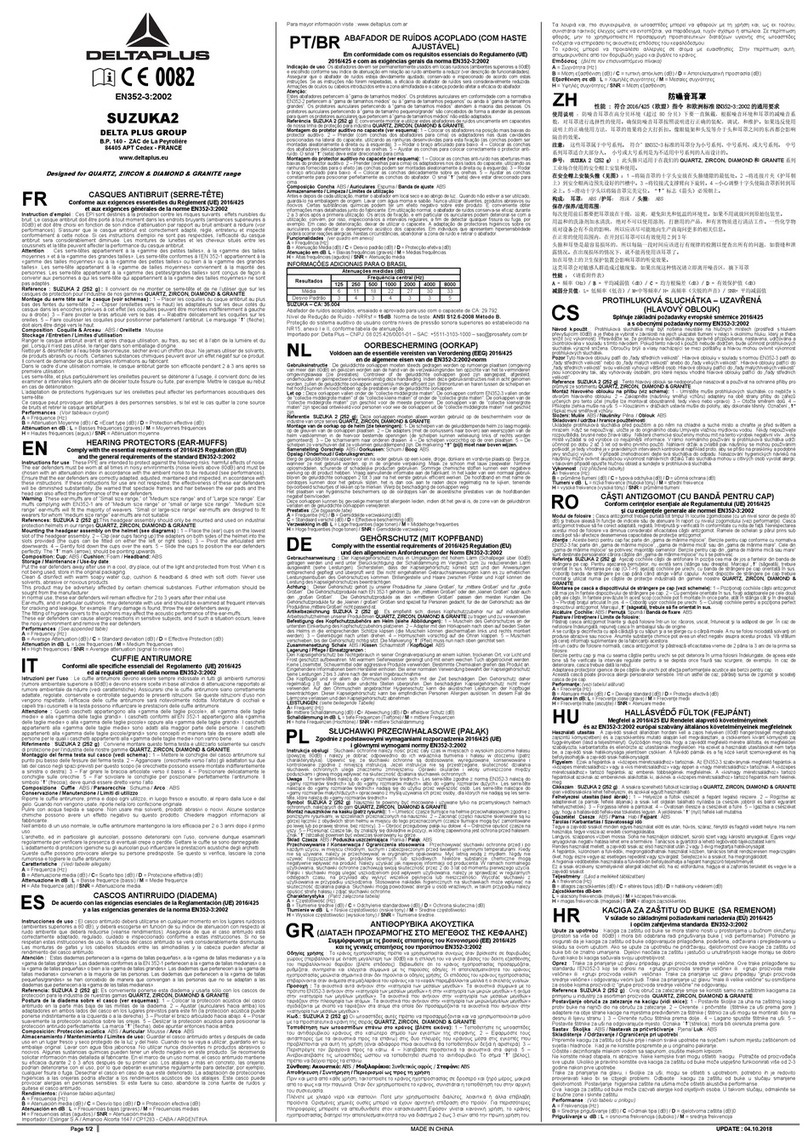Thytronic XMR-D User manual

MANUAL
XMR-D
GROUP “4I+4V+(4I+64F)”
XMR-D EQUIPMENT MANUAL
Ed. 2.9 - 02/2021

2
INTENTIONALLY BLANK PAGE
XMR-D EQUIPMENT MANUAL
Ed. 2.9 - 02/2021

3
TABLE OF CONTENTS
—1 INTRODUCTION 7
Scope and liability...........................................................................................................................................................................................7
Conformity ........................................................................................................................................................................................................7
Service support ...............................................................................................................................................................................................7
Copyright...........................................................................................................................................................................................................7
Warranty...........................................................................................................................................................................................................7
Safety recommendations...............................................................................................................................................................................7
Insulation tests ................................................................................................................................................................................................7
Product identification.................................................................................................................................................................................... 9
Environment .................................................................................................................................................................................................... 9
Graphical conventions .................................................................................................................................................................................. 9
Glossary/definitions....................................................................................................................................................................................... 9
—2 GENERAL 13
Preface........................................................................................................................................................................................................... 13
Photo .............................................................................................................................................................................................................. 13
Main features.................................................................................................................................................................................................14
Cyber Security ...............................................................................................................................................................................................15
—3 TECHNICAL DATA 17
3.1 GENERAL............................................................................................................................................................................................................17
Measuring relays and protection equipment...........................................................................................................................................17
Mechanical data ...........................................................................................................................................................................................17
Insulation test ................................................................................................................................................................................................17
EMC tests for interference immunity)........................................................................................................................................................17
Voltage dip and interruption........................................................................................................................................................................17
EMC tests for interference immunity.........................................................................................................................................................17
Emission......................................................................................................................................................................................................... 18
Mechanical tests.......................................................................................................................................................................................... 18
Climatic tests................................................................................................................................................................................................. 18
Safety ............................................................................................................................................................................................................. 18
Certifications................................................................................................................................................................................................. 18
3.2 INPUT CIRCUITS .............................................................................................................................................................................................. 19
Auxiliary power supply Uaux ..................................................................................................................................................................... 19
Phase current inputs with inductive CTs.................................................................................................................................................. 19
Residual current input................................................................................................................................................................................. 19
Phase voltage inputs with inductive VTs.................................................................................................................................................. 19
Relays............................................................................................................................................................................................................. 20
Block output (Logic selectivity).................................................................................................................................................................. 20
3.4 MMI (Man Machine Interface) ..................................................................................................................................................................... 20
3.5 COMMUNICATION INTERFACES .................................................................................................................................................................. 20
Local port....................................................................................................................................................................................................... 20
Network ports............................................................................................................................................................................................... 20
Protocol.......................................................................................................................................................................................................... 20
3.6 RATED VALUES AND GENERAL SETTINGS................................................................................................................................................. 20
Rated values (all versions)...........................................................................................................................................................................21
Rated values for versions with inductive CT and VT inputs...................................................................................................................21
Rated values for versions with ThySensor inputs ...................................................................................................................................21
Binary inputs..................................................................................................................................................................................................21
Output relays..................................................................................................................................................................................................21
Input sequence..............................................................................................................................................................................................21
Polarity............................................................................................................................................................................................................21
Line ..................................................................................................................................................................................................................22
Starting control set .......................................................................................................................................................................................22
3.7 PROTECTIVE FUNCTIONS ...............................................................................................................................................................................22
Base current - IB...........................................................................................................................................................................................22
Underimpedance - 21 ...................................................................................................................................................................................22
Overeflux- 24..................................................................................................................................................................................................22
Thermometric probes - 26........................................................................................................................................................................... 23
Undervoltage - 27......................................................................................................................................................................................... 23
Positive sequence undervoltage - 27V1....................................................................................................................................................24
100% stator earth fault with 3rd harmonic (27H - 59H)............................................................................................................................24
Directional active overpower 32P..............................................................................................................................................................24
Directional reactive overpower 32Q..........................................................................................................................................................25
Undercurrent - 37..........................................................................................................................................................................................25
Directional active underpower 37P............................................................................................................................................................25
Directional reactive underpower 37Q........................................................................................................................................................26
XMR-D EQUIPMENT MANUAL
Ed. 2.9 - 02/2021

4
Loss of field - 40............................................................................................................................................................................................26
Negative sequence overcurrent for Line/Transformer protection- 46LT ............................................................................................26
Negative sequence overcurrent for Generator protection - 46G .........................................................................................................27
Negative sequence overcurrent for Motor protection - 46M .............................................................................................................. 28
Negative sequence / positive sequence current ratio - I2/I1............................................................................................................... 29
Phase rotation direction check - 47......................................................................................................................................................... 29
Thermal image for Line/Transformer protection - 49LT.......................................................................................................................... 29
Thermal image for Motor/generator protection - 49MG........................................................................................................................ 29
Inadvertent energization - 50/27................................................................................................................................................................ 30
Phase overcurrent - 50/51 side H .............................................................................................................................................................. 30
Phase overcurrent - 50/51 side L................................................................................................................................................................31
Locked rotor - 51LR(48)/14 ...........................................................................................................................................................................32
Voltage-controlled / restraint overcurrent - 51V..................................................................................................................................... 33
Residual overcurrent - 50N/51N or High impedance restricted earth fault - 87NHIZ ...................................................................... 33
Calculated residual overcurrent - 50N(Comp)/51N(Comp).....................................................................................................................35
Minimum power factor - 55 .........................................................................................................................................................................36
Overvoltage - 59.............................................................................................................................................................................................36
Residual overvoltage - 59N..........................................................................................................................................................................37
Negative sequence overvoltage - 59V2.................................................................................................................................................... 38
Rotor earth fault (64F).................................................................................................................................................................................. 38
High impedance restricted earth fault - 64REF ....................................................................................................................................... 38
Maximum number of startings (Restart inhibition) - 66.......................................................................................................................... 38
Directional phase overcurrent - 67 ........................................................................................................................................................... 38
Directional earth fault overcurrent- 67N...................................................................................................................................................41
Out of step - 78...............................................................................................................................................................................................44
Overfrequency - 81O.....................................................................................................................................................................................44
Underfrequency - 81U ..................................................................................................................................................................................44
Frequency rate of change (81R)..................................................................................................................................................................45
Differential - 87G-87M-87T...........................................................................................................................................................................45
Lock-out - 86...................................................................................................................................................................................................46
Vector jump ....................................................................................................................................................................................................46
Breaker failure - BF (Side L and Side H)....................................................................................................................................................46
3.8 CONTROL AND MONITORING........................................................................................................................................................................47
Synchrocheck - 25 ........................................................................................................................................................................................47
Selective block - BLOCK2 ........................................................................................................................................................................... 48
Internal selective block - BLOCK4............................................................................................................................................................. 48
Circuit Breaker supervision........................................................................................................................................................................ 48
VT supervision - 74VT .................................................................................................................................................................................. 48
CT supervision - 74CT.................................................................................................................................................................................. 48
Demand measures....................................................................................................................................................................................... 48
Oscillography (DFR) ..................................................................................................................................................................................... 48
PLC (Programmable Logic Controller) ..................................................................................................................................................... 49
Arc Flash........................................................................................................................................................................................................ 49
3.9 METERING......................................................................................................................................................................................................... 50
Accuracy........................................................................................................................................................................................................ 50
—4 FUNCTION CHARACTERISTICS 51
4.1 HARDWARE .......................................................................................................................................................................................................51
Power supply board......................................................................................................................................................................................51
CPU module....................................................................................................................................................................................................51
Input board.....................................................................................................................................................................................................52
MMI (Display, Keyboard and LED) .............................................................................................................................................................52
4.2 FIRMWARE........................................................................................................................................................................................................ 53
Base software............................................................................................................................................................................................... 53
Real-time operating system........................................................................................................................................................................ 53
Task................................................................................................................................................................................................................. 53
Drivers.............................................................................................................................................................................................................54
Application Software....................................................................................................................................................................................54
Data Base.......................................................................................................................................................................................................54
Self test (Application) ...................................................................................................................................................................................54
Development tool (Builder)..........................................................................................................................................................................54
4.3 I/0 DESCRIPTION ..............................................................................................................................................................................................55
Metering inputs .............................................................................................................................................................................................55
Conventions................................................................................................................................................................................................... 60
Use of measured signals............................................................................................................................................................................. 63
Binary inputs..................................................................................................................................................................................................64
Output relays................................................................................................................................................................................................. 70
LED indicators................................................................................................................................................................................................71
Communication interfaces...........................................................................................................................................................................75
XMR-D EQUIPMENT MANUAL
Ed. 2.9 - 02/2021

5
4.4 PROTECTIVE ELEMENTS .................................................................................................................................................................................76
Rated values...................................................................................................................................................................................................76
Underimpedance - 21 ...................................................................................................................................................................................81
Overflux - 24 ...................................................................................................................................................................................................87
Thermal protection with RTD thermometric probes - 26 ........................................................................................................................94
Undervoltage - 27..........................................................................................................................................................................................96
Positive sequence undervoltage - 27V1................................................................................................................................................. 100
100% stator earth-fault with 3rd harmonic: residual under-overvoltage (27H-59H).........................................................................102
Directional active overpower - 32P..........................................................................................................................................................106
Directional reactive overpower - 32Q..................................................................................................................................................... 109
Undercurrent - 37........................................................................................................................................................................................112
Directional active underpower - 37P.......................................................................................................................................................114
Directional reactive underpower - 37Q...................................................................................................................................................117
Loss of field - 40.......................................................................................................................................................................................... 120
Negative sequence overcurrent for Line or Transformer protection - 46LT .....................................................................................126
Negative sequence overcurrent for Generator protection - 46G ( .................................................................................................... 133
Negative sequence overcurrent for motor protection - 46M ............................................................................................................. 138
Phase rotation direction check - 47.........................................................................................................................................................145
Thermal image - 49LT for Line or Transformer protection (Side H and Side L) .................................................................................146
Thermal image - 49MG for motor or generator protection...................................................................................................................157
Inadvertent energization - 50/27.............................................................................................................................................................. 168
Negative sequence current / positive sequence current ratio - I2/I1................................................................................................172
Phase overcurrent - 50/51 Side H and Side L.........................................................................................................................................175
Residual overcurrent - 50N.1/51N.1, 50N.2/51N.2 or high impedance restricted earth fault - 87NHIZ.1, 87NHIZ.2 side 1,2....185
Locked rotor- 50S/51LR(48)/14...................................................................................................................................................................196
Voltage controlled/restraint overcurrent - 51V ......................................................................................................................................202
Residual overcurrent - 50N(Comp)/51N(Comp) side H or side L ........................................................................................................ 209
Minimum power factor - 55 ..................................................................................................................................................................... 219
Overvoltage - 59.......................................................................................................................................................................................... 223
Residual overvoltage - 59N........................................................................................................................................................................227
Negative sequence overvoltage - 59V2...................................................................................................................................................231
Rotor Earth Fault - 64F .............................................................................................................................................................................. 233
Low impedance restricted ground fault- 64REF.................................................................................................................................... 238
Maximum number of starts - 66................................................................................................................................................................241
Phase directional overcurrent - 67.......................................................................................................................................................... 243
Ground directional overcurrent - 67N..................................................................................................................................................... 259
Ground directional overcurrent with calculated residual current - 67N(Comp) ..............................................................................282
Out of Step - 78 ............................................................................................................................................................................................294
Overfrequency - 81O.................................................................................................................................................................................. 303
Underfrequency - 81U ................................................................................................................................................................................305
Frequency rate change - 81R................................................................................................................................................................... 308
Vector jump - dphi.......................................................................................................................................................................................326
Breaker failure - BF.................................................................................................................................................................................... 328
4.5 CONTROL AND MONITORING......................................................................................................................................................................334
Synchrocheck - 25 ......................................................................................................................................................................................334
Remote tripping ...........................................................................................................................................................................................342
Second Harmonic Restraint - 2ndh-REST.............................................................................................................................................. 343
CT supervision - 74CT.................................................................................................................................................................................344
VT supervision - 74VT .................................................................................................................................................................................345
Trip circuit supervision - 74TCS.................................................................................................................................................................347
Virtual I/O..................................................................................................................................................................................................... 350
Circuit breaker supervision (Side H and Side L) ................................................................................................................................... 353
Oscillography...............................................................................................................................................................................................355
Arc Flash Protection ...................................................................................................................................................................................356
—5 MEASURES, LOGIC STATES AND COUNTERS 357
Measures......................................................................................................................................................................................................357
Protections.................................................................................................................................................................................................. 358
Delayed inputs............................................................................................................................................................................................ 358
Self test ........................................................................................................................................................................................................ 358
Pilot wire diagnostic.................................................................................................................................................................................. 359
Selective Block - BLOCK2......................................................................................................................................................................... 359
Fault recording - SFR................................................................................................................................................................................. 359
Event recording - SER................................................................................................................................................................................ 359
Oscillography - DFR ................................................................................................................................................................................... 359
XMR-D EQUIPMENT MANUAL
Ed. 2.9 - 02/2021

6
—6 INSTALLATION 361
6.1 PACKAGING.....................................................................................................................................................................................................361
6.2 MOUNTING......................................................................................................................................................................................................361
6.3 ELECTRICAL CONNECTIONS ....................................................................................................................................................................... 363
6.4 RATED In AND Ien SETTINGS ......................................................................................................................................................................371
6.5 LED COMMISSIONING ..................................................................................................................................................................................371
6.6 FINAL OPERATIONS .......................................................................................................................................................................................371
—7 PROGRAMMING AND SETTINGS 372
7.1 SW ThyVISOR..................................................................................................................................................................................................372
ThyVisor use.................................................................................................................................................................................................372
7.2 MMI (Man Machine Interface) ................................................................................................................................................................... 373
Reading variables (READ)......................................................................................................................................................................... 373
Setting modifying (SET) ..............................................................................................................................................................................374
TEST...............................................................................................................................................................................................................375
COMMUNICATION......................................................................................................................................................................................375
Circuit breaker commands ........................................................................................................................................................................375
Enable / block changes via keyboard - Password.................................................................................................................................376
7.4 MAINTENANCE...............................................................................................................................................................................................377
7.5 REPAIR..............................................................................................................................................................................................................377
7.6 PACKAGING.....................................................................................................................................................................................................377
—8 APPENDIX 378
8.1 APPENDIX A1 - INPUT-OUTPUT SCHEME................................................................................................................................................. 378
8.2 APPENDIX A2 - PROTECTION FUNCTIONS............................................................................................................................................... 379
8.3 APPENDIX A3 - APPLICATION SCHEMES................................................................................................................................................. 380
8.4 APPENDIX B - EC Conformity Declaration .................................................................................................................................................384
XMR-D EQUIPMENT MANUAL
Ed. 2.9 - 02/2021

INTRODUCTION 7
1 INTRODUCTION
—Scope and liability
The technical characteristics of XMR, protective relays instructions for installation, adjustment and
commissioning are illustrated.
This document contains the description of all the protection functions present in the versions
XMR-A, XMR-V, XMR-P, XMR-D and XMR-T; for the functions actually present in the single ones
versions refer to the table on the following page.
The information given in this document is reviewed regularly; any corrections and integration will be
included in subsequent editions that are identified by the date of revision.
We appreciate any suggestions for improvement.
We reserve the right to make technical improvements without notice.
—Conformity
The product complies with the CEE directives:
• EMC Council Directives 2014/30/EC
• Low voltage Directives: 2014/35/EC
—Service support
Contact: Service tecnico THYTRONIC www.thytronic.it
—Copyright
All right reserved; It is forbidden to copy, modify or store material (document and sw) protected by
copyright without Thytronic consent.
—Warranty
Thytronic warrants devices against defects in materials and workmanship under normal use for a
period of ONE (1) year from the date of retail purchase by the original end-user purchaser (“Warranty
Period”).
—Safety recommendations
The warming contained in this document are all-important for safety; special attention must be paid
to the following symbols:
Installation and commissioning must be carried out by qualified person; Thytronic assumes no re-
sponsibility for damages caused from improper use that does not comply all warning and caution in
this manual.
In particular the following requirements must be met:
• Remove power before opening it.
• Verify the voltage absence by means suitable instrumentation on relay connections; attention must
be paid to all circuits supplied by external sources (binary input, CT, etc...)
• Care must be taken when handling metal parts.
—Insulation tests
After insulation tests, hazardous voltages (capacitor charges,...) may be arise; it is advisable to gra-
dually reduce the test voltage avoiding to erase it abruptly.
CAUTION Minor personal injury or property damage can result if proper precautions are not taken
DANGER Death, severe personal injury or substantial property damage will result if proper precautions
are not taken
WARNING Death, severe personal injury or substantial property damage can result if proper precautions
are not taken.
CAUTION
Settings must be established on the basis of a coordination study.
Numerical values inside examples have educational purpose only; they don’t be used, in no way,
for actual applications.
XMR-D EQUIPMENT MANUAL
Ed. 2.9 - 02/2021

8INTRODUCTION
Function ANSI Code IEC61850
Logical Node
XMR-A
4I+1V/1A
XMR-V
4V
XMR-P
4I+4V
XMR-D
4I+4V
(4I+64F)
XMR-T 8I+1V
XMR-T PRO
11I+1V
Under Impedence 21 PDIS - F21Sn
Over Flux(V/Hz) 24 PVPH - F24 Sn L
SynchroCheck 25 RSYN - F25 State
GGIO - F25 Management
Thermal with Pt100 Probes 26 PTTR - F26 Sm
Under Voltage 27 PTUV - F27 Sn
Positive Sequence Undervoltage 27V1 PTUV - F27V1
100%Stator earth fault with 3rd harmonic 27H - 59H
Directional active overpower 32P PDOP - F32Pn
Directional reactive overpower 32Q PDOP - F32Qn
Under Current 37 PTUC - F37H1 - F37L1 L, H, T
Directional active underpower 37P PDUP - F37Pn
Directional reactive underpower 37Q PDUP - F37Qn
Loss of Field 40(M/G) PDUP - F40Sn
Negative sequence overcurrent transformer 46LT PTOC - F46Hn - F46Ln L, H, T
Negative sequence overcurrent Motor/Generator 46M, 46G PTOC - F46GSA - F46GS1
Negative /positive sequence current ratio I2/I1 PTOC - FI21L- FI21H L, H, T
Phase reversal 47 PTOV - F47 Us1
Thermal Image Transformer 49LT PTTR - F49H1- F49L1 L, H, T
Thermal Image Motor/Generator 49MG PTTR - F49MS1
Unintentional energisation at standstill protection 50/27 GGIO- SPV
Phase overcurrent side H and side L 50/51 PTOC - F51Lp - F51Hp L, H, T
Maximum Residual Overcurrent 50N/51N PTOC - F5N1p - F5N2p L, H, T
Maximum Residual Overcurrent(2) 50N/51N(2) PTOC - F5N1p - F5N2p
Calculated Residual Overcurrent 50N/51N(Comp) PTOC - F5NLp - F5NHp
Locked Rotor 51LR(48)/14 PMSS - F51Rn
Voltage restraint overcurrent 51V PTOC - F51Vn
Minimum Power Factor 55 PUPF - F55Sn
Overvoltage 59 PTOV - F59Sn
Residual Overvoltage 59N PTOV - F59Np
Negative sequence overvoltage 59V2 PTOV - F59V2
Rotor Earth Fault 64F PTOC - F64Fn
Low impedance restricted earth fault 64REF PHIZ - F64F1 1, 2
Maximum number of startings (Restart inhibition) 66 PMRI - F66S1
Phase Directional Overcurrent
(Voltmetric Permission) 67 PTOC - F67Sq
RDIR - F67Sq
Ground directional overcurrent 67N
PTOC - F67Nw
RDIR - F67Nw
PTOV - F67Nw
PTOC - F67N6 Intermittent
PTOC - F67N7 Evolutionary
Ground directional overcurrent with calculated
residual current 67N(Comp) PTOC - F67NCq
RDIR - F67NCq
PTOV - F67NCq
Out of Step Protection 78 PPAM - F78A - F78B
Automatic Recloser 79 RREC - F79
Vector Jump DPHI GGIO- SPV
Over frequency 81O PTOF - F81Oq
Under frequency 81U PTUF - F81Uq
Frequency rate Change 81R PFRC - F81Rq
Lock-out 86
Double slope biased differential for Generator/
Motor/Transformer 87M-G-T PHAR - F87Hw
Breaker Failure BF RBRF L, H, T
CT Supervision 74CT GGIO- SPV L, H
VT Supervision 74VT GGIO- SPV
Trip Circuit Supervision 74TCS SCBR - 74TCSH - 74TCSL
Remote TRIP
2ndh-REST PHAR - FI2S1L - FI2S1H
ARC FLASH
Multiple Profiles (A, B)
Multiple Profiles (A, B, C, D)
Optional with requested HW Expansion
Threshold key n (1,2) - m (1,2,3,4,5,6) - p (1,2,3) - q (1,2,3,4) - w (1,2,3,4,5) Optional with requested SW Package
Standard
Work in Progress
XMR-D EQUIPMENT MANUAL
Ed. 2.9 - 02/2021

INTRODUCTION 9
—Product identification
Each device is equipped with:
• Identification label installed on the front side with following informations: code number, phase and
residual nominal currents, auxiliary voltage range and CE mark[1]:
• Test label with following informations: data, serial number and test operator signature[2].
—Environment
The XMR device must be employed according to the environment conditions shown (see technical
data).
In case of different environment conditions, appropriate provisions must be provided (conditioning
system, humidity control, etc...).
If contaminants are present (dust, corrosive substances, etc...), filters must be provided.
—Graphical conventions
The CEI/IEC and ANSI symbols is employed where possible:
e.g.: 51 = ANSI code concerning the overcurrent element.
Following text formats are used:
The Thyvisor menu:
Phase overcurrent -50/51
The parameter description (measures, thresholds, operate time,...) and related value:
I> element
Denitetime
I>def
The display messages (MMI) are shown as:
XMR-x
Notes are highlighted with cursive letters inside colored bar
—Glossary/definitions
fn Rated frequency
InH Relay phase rated current side H
InpH Phase CT primary rated current side H
InL Relay phase rated current side L
InpL Phase CT primary rated current side L
Ing Protected device rated current
IEn1 Relay residual rated current (input 1)
IEnp1 Residual CT primary rated current (input 1)
IEn2 Relay residual nominal current (input 2)
IEnp2 Residual CT primary nominal current (input 2)
ANSI codes:21 Underimpedance
24 Over Flux(V/Hz)
25 SynchroCheck
26 Thermal with Pt100 probes
27 Undervoltage
27V1 Positive sequence undervoltage
32P Directional active overpower
32Q Directional reactive overpower
37 Undercurrent
37P Directional active underpower
37Q Directional reactive underpower
40 Loss of field
46LT Negative sequence overcurrent transformer
46M-46G Negative sequence overcurrent
I2/I1 Negative /positive sequence current ratio
47 Phase reversal
49LT Thermal Image Transformer
49MG Thermal image
50/27 Unintentional energisation at standstill protection
50/51 Phase overcurrent side H and side L
50N/51N Maximum Residual Overcurrent
50N(Comp)/51N(Comp) Calculated residual overcurrent
Note 1 The rating data can be found on labels on the back and on the front (accessible after removing the left frame)
Note 2 The rating data can be found on labels on the front plate (accessible after removing the right frame)
XMR0#000000000
In5A
UAUX 110-230 Vac/dc
100V
100V
IEn
UEn
Un
1A 1A
5A 1A
5A
XMR-D EQUIPMENT MANUAL
Ed. 2.9 - 02/2021

10 INTRODUCTION
51LR(48)/14 Locked rotor
51V Voltage restraint overcurrent
55 Minimum power factor
59 Overvoltage
59N Residual overvoltage
59V2 Negative sequence overvoltage
64F Rotor Earth Fault
64REF Low impedance restricted earth fault
66 Maximum number of startings (Restart inhibition)
67N Ground directional overcurrent
67N(Comp) Ground directional overcurrent with calculated
residual current
81O/81U Overfrequency and underfrequency
87G-87M/87T Double slope biased differential for generator/motor/transformer
BF Circuit breaker failure
74CT-74VT CT-VT supervision
78 Out of Step Protection
79 Automatic Recloser
74TCS Trip circuit supervision
52 o CB (Circuit Breaker) Circuit Breaker
52a Auxiliary contact in the breaker that is in the same position as the
breaker. It can be assigned to a binary input to locate the CB position
(Breaker failure and/or CB diagnostic functions).
52b Auxiliary contact in the breaker that is in the opposite position as the
breaker (52b open = CB closed)
DFR Digital Fault Recorder (Oscillography)
SER Sequential Event Recorder
SFR Sequential Fault Recorder
ANSI American National Standard Institute
IEEE Institute of Electrical and Electronics Engineers
IEC International Electrotechnical Commission
CENELEC Comité Européen de Normalisation Electrotechnique
K1...Kx Output relays
Pulse Output relay with pulse operation
tTR Output relay minimum pulse width
Latched Output relay with latched operation (manual reset) Output relay with
latched operation (automatic reset)
No-latched Output relay with no-latched operation (automatic reset)
VT Voltage Transformer
CT Current Transformer
ThySensor Combo device
P1 IEC nomenclature for primary polarity mark of CTs (as an alternative to
a ANSI dot)
P2 IEC nomenclature for primary polarity mark of CTs (as an alternative to
a ANSI no-dot)
S1 IEC nomenclature for secondary polarity mark of CTs (as an alternative
to a ANSI dot)
S2 IEC nomenclature for secondary polarity mark of CTs (as an alternative
to a ANSI no-dot)
Self test Diagnostic
Start Leave an initial condition or reset condition (Pickup)
Trip Operation (with operate time)
Operating time Duration of time interval between the instant when the characteri-
stic quantity in reset condition is changed, under specified condi-
tions, and the instant when the relay operates
Dropout ratio The ratio of a reset value to an operate value in well-specified con-
ditions. The dropout ratio may be lower or greater than 1 according
as an over or under element is considered
Reset time Duration of the time interval between the instant when the characte-
ristic quantity in operate condition is changed, under specified con-
ditions, and the instant when the relay operates.
The stated reset time is related to a step variation of characteristic
quantity in operate condition to the reset condition.
Overshoot time The critical impulse time for a relay which is in its reset condition, is
the longest duration a specified change in the input energizing quan-
tities (characteristic quantity), which will cause the relay to change
to operate condition, can be applied without the relay switches. The
overshoot time is the difference from the operate time and the cri-
tical impulse time. The declared values for the overshoot time are
applicable with the lower setting value of the operation time.
XMR-D EQUIPMENT MANUAL
Ed. 2.9 - 02/2021

INTRODUCTION 11
Symbols.ai
Symbols
I>> Start
I>> BF_OUT
IPh Block2
Logic internal signal (output); may be a logical state
(e.g.I>> Start
) or a numerical value
It is available for reading (ThyVisor + communication interface)
Logic external signal (intput); may be a command coming from a binary input or a sw command
It is available for reading (ThyVisor + communication interface)
Internal signal (e.g. Breaker Failure output state concerning to the 2nd threshold of the 50 element)
It is not available for reading (missing arrow)
AND and NAND logic gates
OR and NOR logic gates
Limit block (I>> threshold).
Computation block (Max phase current)
Threshold setting (e.g. pickup
I>>)
.
The value is available for reading and is adjustable by means ThyVisor + MMI.
Switch
ON delay timer with reset (t
ON
delay)
ON delay timer without reset (t
ON
delay)
Curve type (definite/inverse time)
0T
IL3
Max[IL1 ,IL2 ,IL3 ]
IL2
IL1
t
ON
t
ON
t
ON
t
ON
t
RESET
INPUT
OUTPUT
t
ON
t
ON
t
ON
t
INPUT
OUTPUT
0T
t
ON
& &
≥1≥1
EXOR logic gate
=1
I>>
II ≥
I>>
t
ON
RESET
0T
SR
S1
RQ1
Flip Flop set-dominant
MMI (Man Machine Interface) Operator front panel
ThyVisor Setting and monitoring software
Subnet Mask (Ethernet nomenclature)
Sw Software
Fw Firmware
Upgrade Firmware upgrade
XML eXtensible Markup LanguageXML
Upgrade Firmware upgrade
XMR-D EQUIPMENT MANUAL
Ed. 2.9 - 02/2021

12 INTRODUCTION
Symbols1 .ai
t
RESET
INPUT
OUTPUT
tOFF
tOFF
tOFF tOFF
Minimum pulse width operation for output relays (tTR
)
tTR
t
tTR
INPUT
OUTPUT
tTR
0 T
tTR
t
tTR
INPUT
OUTPUT
Latched operating mode for output relays and LEDs
Pulse operating mode for output relays
t
INPUT
OUTPUT
Latched
tTR
T0
RESET
OFF delay timer (dropout) with reset (tOFF delay)
OFF delay timer (dropout) without reset (tOFF delay) tOFF
t
tOFF
INPUT
OUTPUT
tOFF
0 T
XMR-D EQUIPMENT MANUAL
Ed. 2.9 - 02/2021

GENERAL 13
2 GENERAL
—Preface
Protection developed for use as general protection for users connected to the distribution network
MT in applications where overcurrent protection functions are provided directional and non-directio-
nal phase and directional ground.
Relay can be used on radial and / or MV and LV meshed networks to protect lines and power tran-
sformers:
• On radial lines, in rings or in parallel of any length in systems with neutral grounded, isolated,
with Petersen coil and / or resistance
• For earth-fault protection for generators connected in parallel directly at the same bar
• For earth-fault protection on both MT-BT sides of transformers
In addition to the protections of maximum phase current and maximum residual current, the following
functions are present:
• Thermal image for lines and transformers
• Maximum residual voltage
• Maximum directional earth current
The following measurement circuits are present:
• Versions with CT and VT inputs
• Three phase currents with independently selectable rated current at 1A or 5 A via software
Optionally:
• A residual current input with selectable rated current at 1A or 5 A via software
Or
• A residual voltage input, with nominal voltage programmable in the range 50 ... 130 V (UER =
100V)
To integrate the protection functions, there are the functions of failure to open the circuit-breaker
(BF), CT monitoring (74CT), VT monitoring (74VT), trip circuit monitoring (74TCS), synchronism control
and programmable logic (PLC).
The methods of calibration, programming and reading of the measurements and recordings can be
implemented through Personal Computer with Software support ( ThyVisor) or via bus RS485 or Ether-
net communication; all the above operations are possible using the keyboard frontal view (MMI).
—Photo
XMR-D EQUIPMENT MANUAL
Ed. 2.9 - 02/2021

14 GENERAL
—Main features
• Metallic case
• Backlight LCD Graphic Display with touchscreeen keyboard
• 10 Accelerator function keys
• 16 LEDs that may be joined with matrix criteria to many and various functions
• 1 LED for Power Supplay indication and Diagnostic (Flashing)
• 2 LEDs for Start and Trip indication
• 2 LEDs for Local/Remote control
• RESET key to clear LED indications and latched output relays
• 7—14—21—53 programmable Logical Inputs
• 7—11—15—31 programmable Logical Outputs
• Each output relay may be set with normally energized or normally de-energized operating mode
and manual or automatic reset (latched/no-latched).
• Rear Ethernet communication port, with MODBUS TCP/IP® or IEC61850 protocol, with RJ45
(copper wires) and FX (optical fiber) redundant connection.
• Rear RS485 port, with ModBus protocol.
• Ethernet front serial port (local communication for ThyVisor).
• Real time clock with super capacitor.
The most significant constructive features are:
• Galvanically insulated input and output circuits (communication and binary circuits included).
• Optimum filtering of input signals through combined use of analog and digital filters.
• Traditional electromechanical-type final output contacts with continuous monitoring of control
coil continuity.
• Auxiliary supply comprising a switching-type voltage stabilizing circuit having a very wide wor-
king range and a very small power dissipation
• Nominal frequency: 50 or 60 Hz.
The most significant operating features are:
• Programming of operating modes and parameters by means of the front keys and alphanumeric
display, with a programming procedure based on carrying out guided selections and on explicit
and immediate signalling of the operations being performed, so that such procedure can be
carried out without coding tables or mnemonic informations.
• The feature modification operations do not interrupt the normal functions of the relay.
• Impossibility of programming unacceptable parameter values, thanks to the automatic limitation
of top and bottom scale values for the relative setting ranges.
• Currents are sampled 64 times per period and measured in the effective value (RMS) of the
fundamental component using the DFT (Discrete Fourier Transform) algorithm and digital filters.
• The fault recorder (SFR) runs continuously capturing in circular mode the last twenty events
upon trigger of binary input/output and/or element pickup (start-trip).
• The event recorder (SER) runs continuously capturing in circular mode the last three hundred
events upon trigger of binary input/output.
• Recording of the last setting changes (Logger).
• Digital fault recorder (DFR) in COMTRADE format (oscillography).
• All settings and data recordings (faults, events, meterings and oscillography records) are stored
in non-volatile memory and then are retained even when the auxiliary power supply goes down.
• Modularity
In order to increase I/O capacity it’s possible customized the device adding :
• Auxiliary Internal Cards
◊ Digital Outputs
◊ Digital Inputs
• External Modules
◊ Module 8 Digital Outputs + 16 Digital Inputs(XMRI)
◊ Module 8 PT100 (XMPT)
◊ Module 32 Digital Inputs (XMID32)
◊ Module 16 Digital Outputs (XMR16)
◊ Module 6 Analogue Outputs 4÷20mA (XMCI)
◊ Rotor-Ground Protection Module (XMR-P and XMR-D ONLY)
XMR-D EQUIPMENT MANUAL
Ed. 2.9 - 02/2021

GENERAL 15
—Cyber Security
Cybersecurity features implemented in XMR Relays help to mitigate cyber threats, realising:
• Secured communication between XMR protection relays and associated tool by SSH (Secure
SHell) protocols
• Password based user authentication
• Role Based Access Control (RBAC) authorization management
• Secured log storage (Syslog Service)
It is possible to identify the following operating areas:
• Configuration Management
• HW Systems and Networking Equipment
• Initial System Configuration
• Threat and Vulnerability Management
• Access Control
• Authentication and Authorization Management
• Auditing
• Network Communication Security
Described procedures have been selected considering the following standards and guide lines:
• ISO/IEC 27001:2013
• NERC CIP – North American Electric Reliability Corporation Critical Infrastructure Protection
• IEC 62351
IEC 62351 standard will be applied when specifically requested, covering the control of communtion
protocols and data flow.
Configuration Management
Configuration Management is a set of procedures whose purpose is to check hardware, firmware,
software and documentation changes in order to ensure that all devices are protected against
unwanted changes before, during and after the implementation of the system.
2.HW Systems and Networking
EquipmentConfiguration
The devices are industrial and comply with the rules in terms of quality and electromagnetic
disturbances immunity. Regarding heat dissipation only passive systems without fans are used.
It is possible assign to devices IP addresses according to relevant network planning rules.
On request it is possible to implement adequate HW protection mechanisms (e.g. anti-tamper etc.).
Initial System Configuration
On protection relay are installed only and exclusively the network services necessary for protetion
application program execution, thus limiting the number of open TCP/UDP ports. All these services
and O.S. are updated to the latest version indicated at release time. Accesses for “well-known”
users are also removed and only a local non-administrator user is left active for the initial installtion
configuration of the device.
Threat and Vulnerability
Management
Device Operating System is supported by the relevant supplier ensuring compliance with security
bulletins issued regularly and related patches.
Authentication and Authorization
Management (AAM)
AAM is based on “RBAC” (Rule Based Access Control) model, i.e. the device will allow or not the
execution of certain functions according to assigned user role.
The following types of roles are available:
• “Administrator”: Equipment full control
• “Operator1”: First level limited Read/Write actions
• “Operator2”: Second level limited Read/Write actions
Auditing
The device keeps track, by “syslog” service, of the most important system operations/actions, such
as accesses, configuration changes and the like.
Network Communication Security
The device does not use unencrypted protocols such as telnet, ftp. All communications necessary
for equipment configuration eg: calibration, CID sending, etc. are routed via the “SSH” protocol, in
encrypted mode.
Data exchange protocols with the SCADA, e.g. IEC61850 / DNP3 / MODBUSTCP are unencrypted, if
IEC62351 specification is not expressly requested.
The synchronization protocols NTP, PTP are normally unencrypted.
XMR-D EQUIPMENT MANUAL
Ed. 2.9 - 02/2021

16 GENERAL
XMR Cybersecurity basic scheme
XMR protection relay configuration capabilities and monitoring functionalities set problems related
to the security and privacy of the data traffic exchanged between equipment and remote control
centre.
The aspects to consider in this regard are:
• Traffic encryption, so it cannot be intercepted, analysed and eventually modified freely by third
parties
• Authentication mechanism implementation in order to prevent any third parties false messages
generation avoiding that they can be recognized as valid
User access procedure
Authentication mechanism expects to send authentication requests coming inbound card to a
remote RADIUS authentication server that takes care user validation and it sends to CPU unit a
positive or negative feedback based on the fact that the credentials provided by the user are
correct or not and relevant associated user privilege level information
The RADIUS authentication as a reference to a remote server and uses a shared secret between
card and server for validation of access requests. The configurator provides the possibility to define
all parameters necessary for this authentication mode.
XMR-D EQUIPMENT MANUAL
Ed. 2.9 - 02/2021

TECHNICAL DATA 17
3 TECHNICAL DATA
3.1 GENERAL
—Measuring relays and protection equipment
Part 1: Common requirements IEC 60255-1
—Mechanical data
Mounting:
• Flush
• Rack
External dimensions Basic version (XMR-A, XMR-V, XMR-P) 171 x 178 x 246 (H/W/D)
External dimensions Basic version (XMR-D, XMR-T) 243 x 178 x 246 (H/W/D)
Terminals screw connection
Mass (XMR-A, XMR-V, XMR-P) 4.5 kg
Mass (XMR-D, XMR-T) 5.5 kg
Reference standards EN 60529, EN 60529/A1
Protection degree
• Front IP54
• Terminals IP20
—Insulation test
Reference standards EN 60255-5, IEC 60255-27
High voltage test (50 Hz 60 s)
• Auxiliary power supply 2 kV
• Input circuits 2 kV
• Output circuits 2 kV
• Output circuits (between open contacts) 1 kV
Impulse voltage withstand test (1.2/50 ms):
• Auxiliary power supply 5 kV
• Input circuits 5 kV
• Output circuits 5 kV
• Output circuits (between open contacts) 2.5 kV
Insulation resistance >100 MW
—EMC tests for interference immunity)
Reference standards
• Product standard for measuring relays EN 50263
• Generic standards immunity for industrial environments EN 61000-6-2
• Electromagnetic compatibility requirements for measuring relays and protection equipment
IEC 60255-26, EN 60255-26
Apparati di automazione e controllo per centrali e stazioni elettriche (ENEL utility standard)
• Compatibilità elettromagnetica - Immunità ENEL REMC 02
• Normativa di compatibilità elettromeccanica per apparati e sistemi ENEL REMC 01
—Voltage dip and interruption
Reference standards
Voltage dips, short interruptions and voltage variations on dc input power port immunity tests
EN 61000-4-29
IEC 60255-22-11
Auxiliary power supply in dc energizing quantity
• Interruption (UT=40%) 100 ms
• Interruption (UT=0%) 50 ms
• Voltage variations (UT=80...120%) 10 s
—EMC tests for interference immunity
Reference standards EN 60255-22-1 IEC 60255-22-1
EN 61000-4-12 EN 61000-4-12
Damped oscillatory wave
• 0.1 MHz and 1 MHz common mode 2.5 kV
• 0.1 MHz and 1 MHz differential mode 1.0 kV
• Ring wave common mode 2.0 kV
• Ring wave differential mode 1.0 kV
Reference standards EN 60255-22-2 IEC 60255-22-2
EN 61000-4-2 IEC 61000-4-2
Electrostatic discharge
• Contact discharge 6 kV
• Air discharge 8 kV
Reference standards EN 60255-22-3 IEC 60255-22-3
EN 61000-4-3 IEC 61000-4-3
Radiated radio-frequency fields
XMR-D EQUIPMENT MANUAL
Ed. 2.9 - 02/2021

18 TECHNICAL DATA
• 80...1000 MHz AM 80% 10 V/m
• 900 MHz Pulse modulated 10 V/m
Reference standards EN 60255-22-4 IEC 60255-22-4
EN 61000-4-4 IEC 61000-4-4
Fast transient burst (5/50 ns)
• Auxiliary power supply 2 kV
• Input circuits 4 kV
Reference standards EN 60255-22-5 IEC 60255-22-5
EN 61000-4-5 IEC 61000-4-5
High energy pulse
• Uaux (line-to-ground 10 ohm, 9 mF) 2 kV
• Uaux (line-to-line 0 ohm, 18 mF) 1 kV
• I/O ports (line-to-ground 40 ohm, 0.5 mF) 2 kV
• I/O ports (line-to-line 40 ohm, 0.5 mF) 1 kV
Reference standards EN 60255-22-6 IEC 60255-22-6
EN 61000-4-6 IEC 61000-4-6
Conducted radio-frequency fields
• 0.15...80 MHz AM 80% 1kHz 10 V
Reference standards EN 60255-22-7 IEC 60255-22-7
EN 61000-4-16 IEC 61000-4-16
Power frequency
• Dc voltage 30 V
• 50 Hz continuously 30 V
• 50 Hz 1 s 300 V
• 0.015...150 kHz 30 V
Reference standards EN 61000-4-8 IEC 61000-4-8
Magnetic field 50 Hz
• 50 Hz continuously 100 A/m
• 50 Hz 1 s 1 kA/m
Reference standards EN 61000-4-10 IEC 61000-4-10
Damped oscillatory magnetic field
• Damped oscillatory wave 0.1 MHz 30 A/m
• Damped oscillatory wave 1 MHz 30 A/m
—Emission
Reference standards EN 60255-25 IEC 60255-25
EN 61000-6-4 IEC 61000-6-4
EN 55011 CISPR 11
Electromagnetic emission tests
• Conducted emission auxiliary power supply 0.15...0.5 MHz 79 dB mV
• Conducted emission auxiliary power supply 0.5...30 MHz 73 dB mV
• Radiated emission 30...230 MHz 40 dB mV/m
• Radiated emission 230...1000 MHz 47 dB mV/m
—Mechanical tests
Reference standards EN 60255-21-1 EN 60255-21-2 RMEC01
Vibration, shock, bump and seismic tests on measuring relays and protection equipment
• EN 60255-21-1 Vibration tests (sinusoidal) Class 1
• EN 60255-21-2 Shock and bump test Class 1
—Climatic tests
Reference standards IEC 60068-x ENEL R CLI 01 CEI 50
Ambient temperature -25...+70 °C
Storage temperature -40...+85 °C
Relative humidity 10...95 %
Atmospheric pressure 70...110 kPa
—Safety
Reference standards IEC 60255-27
Pollution degree 3
Reference voltage 250 V
Overvoltage category III
—Certifications
Product standards EN 50263
CE Conformity
• EMC Directive 2014/30/EC
• Low Voltage Directive 2014/35/EC
Type tests IEC 60255-1
XMR-D EQUIPMENT MANUAL
Ed. 2.9 - 02/2021

TECHNICAL DATA 19
3.2 INPUT CIRCUITS
—Auxiliary power supply Uaux
Nominal value (range) 24 ...110 VAC/VDC
110...230 VAC/VDC
Operative range (each one of the above nominal values) 19...132 VAC/VDC
75 VAC/VDC .... 300 VAC
Maximum (energized relays, Ethernet FX) 25 W (35 VA)
Inrush current (max)
• 24 V- 6 A, 5 ms
• 110 V- 20 A, 1 ms
• 230 V~ 50 A, 1 ms
Frequency (for alternate voltage supply) 45...66 Hz
Max distortion factor ( for alternating voltage supply) 15%
Max alternating component (for dc voltage supply):
• Full wave rectified sine wave 100 %
• Sine wave 80 %
Power consumption:
• 1 energized relay, MMI ON, Ethernet active (24V, 48V, 110V-) 10 W
• 1 energized relay, MMI ON, Ethernet active (230 V~) 22 VA
—Phase current inputs with inductive CTs
Relay nominal phase current In1 A or 5 A selectable by sw
Permanent overload 25 A
Thermal overload (1 s) 500 A
Dynamic overload (half cycle) 1250 A
Rated consumption (for any phase) ≤0.002 VA with In=1 A
≤0.04 VA with In=5 A
—Residual current input
Relay nominal residual current IEn 1 A or 5 A selectable by sw or dip-switch
Permanent overload 25 A
Thermal overload (1 s) 500 A
Dynamic overload (half cycle) 1250 A
Rated consumption ≤0.006 VA with IEn=1 A
≤0.12 VA with IEn=5 A
—Phase voltage inputs with inductive VTs
Relay phase to phase nominal voltage Un
150...130 V (UR= 100 V)
200...520 V (UR= 400 V)
Relay phase nominal voltage En= Un/ √3 -
Permanent overload 1.3 Un
Thermal overload (1 s) 2 Un
Rated consumption (for any phase) ≤ 0.5 VA
—Residual voltage input
Relay residual nominal voltage UEn 50...130 V
Permanent overload 1.3 UEn
Thermal overload (1 s) 2 UEn
Rated consumption ≤ 0.5 VA
—Binary inputs
Quantity 7—14—21—53
Type optocoupler
Operative range 24...265 V~/-
Min activation voltage UDIGmin 18 V2
Max consumption, energized 3 mA
Timers
• Acquisition delay OFF/ON (IN1 tON, IN2 tON) 0.00...100.0 s
• Acquisition delay ON/OFF (IN1 tOFF, IN2 tOFF) 0.00...100.0 s
Logic DIRECT/INVERSE
—Block input (Logic selectivity)
Quantity 1
Type polarized wet input (powered by
internal isolated supply)
Max consumption, energized 5 mA
3.3 OUTPUT CIRCUITS
XMR-D EQUIPMENT MANUAL
Ed. 2.9 - 02/2021

20 TECHNICAL DATA
—Relays
Quantity 7—11—15—31
Type Changeover (SPDT, type C)
Make (SPST-NO, type A)
Rated current 8 A
Short duration current (0,5 s) 30 A
Rated voltage/max switching voltage 250 V~/400 V~
Make 1000 W/VA
Minimum switching load 300 mW (5 V/ 5 mA)
Life
• Mechanical 106
• Electrical 105
Breaking capacity:
• Direct current (L/R = 40 ms) 50 W
• Alternating current (l= 0,4) 1250 VA
Minimum pulse width 0....500 ms (step 5 ms)
—Block output (Logic selectivity)
Quantity 1
Type optocoupler
3.4 MMI (MAN MACHINE INTERFACE)
Display 60x85 graphic LCD
LEDs
Total Number 21
• ON/fail (Green) 1
• Remote 1
• Local 1
• Start (Yellow) 1
• Trip (Red) 1
• Programmables (Red) 16
Touchscreen Keyboard 10 keys
Keyboard 10 keys
3.5 COMMUNICATION INTERFACES
—Local port
Ethernet 100 BaseT 100 Mbps
• Connector RJ45
—Network ports
RS485 1200...57600 bps
• Connection screw terminals
Ethernet 100BaseT [1] 100 Mbps
• Connection Optical fiber 1300 nm, ST
100 Base TX, RJ45
—Protocol
ModBus RTU/IEC60870-5-103/DNP3,
ZCP/IP, IEC61850 Level A
Note [1] Two redundant port selectable with TX + TX or FX + FX connections. The secondary port
is activated in the event of failure of the primary port or by means of hw-sw switching command.
3.6 RATED VALUES AND GENERAL SETTINGS
XMR-D EQUIPMENT MANUAL
Ed. 2.9 - 02/2021
This manual suits for next models
7
Table of contents
Other Thytronic Protection Device manuals
